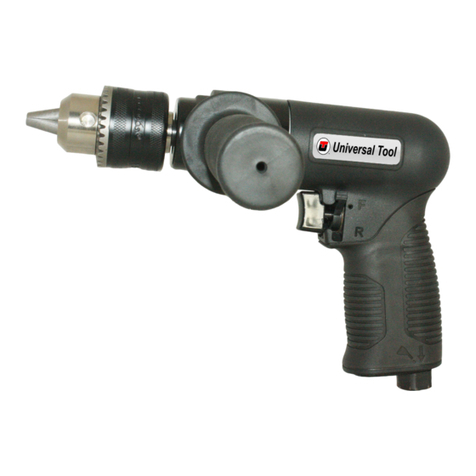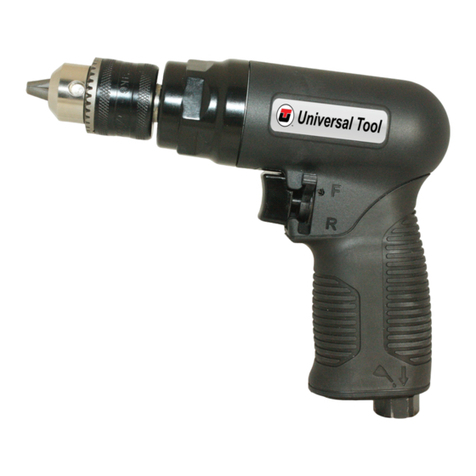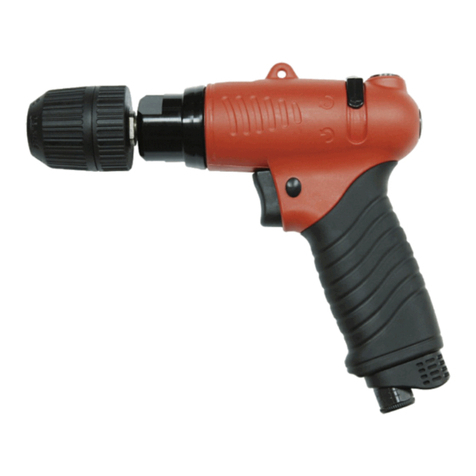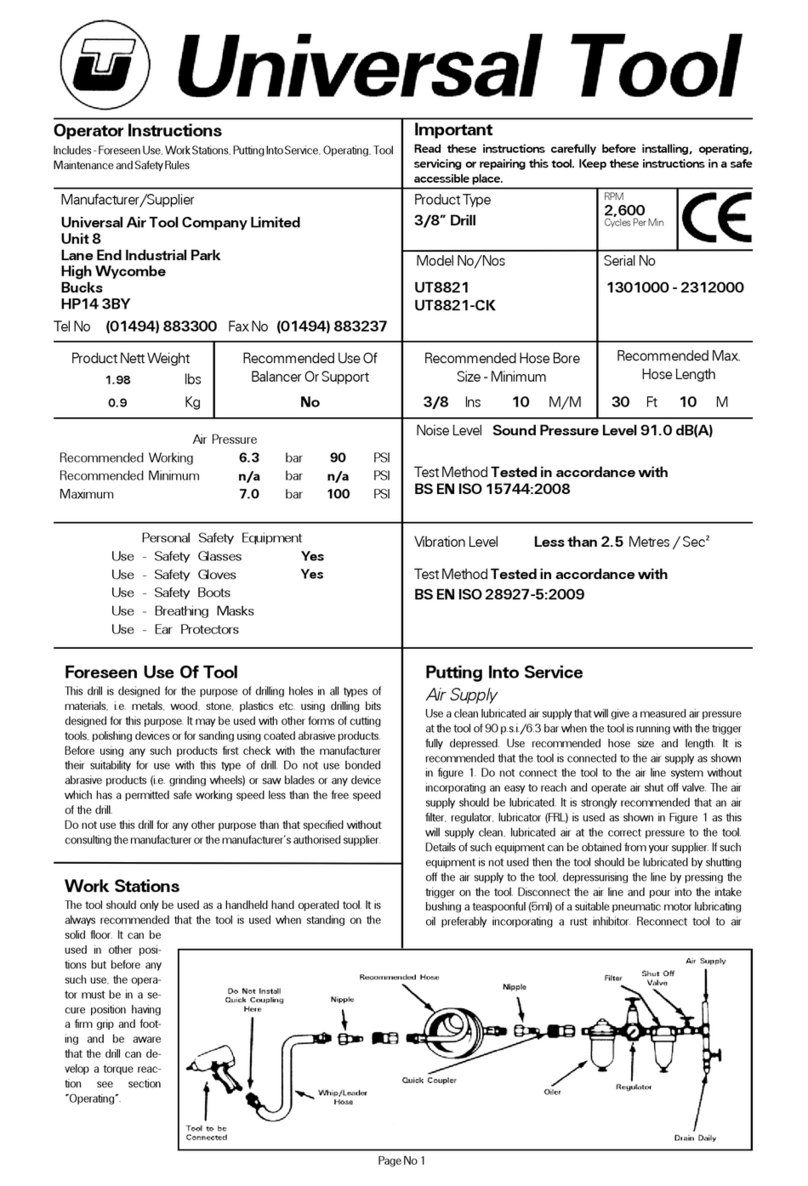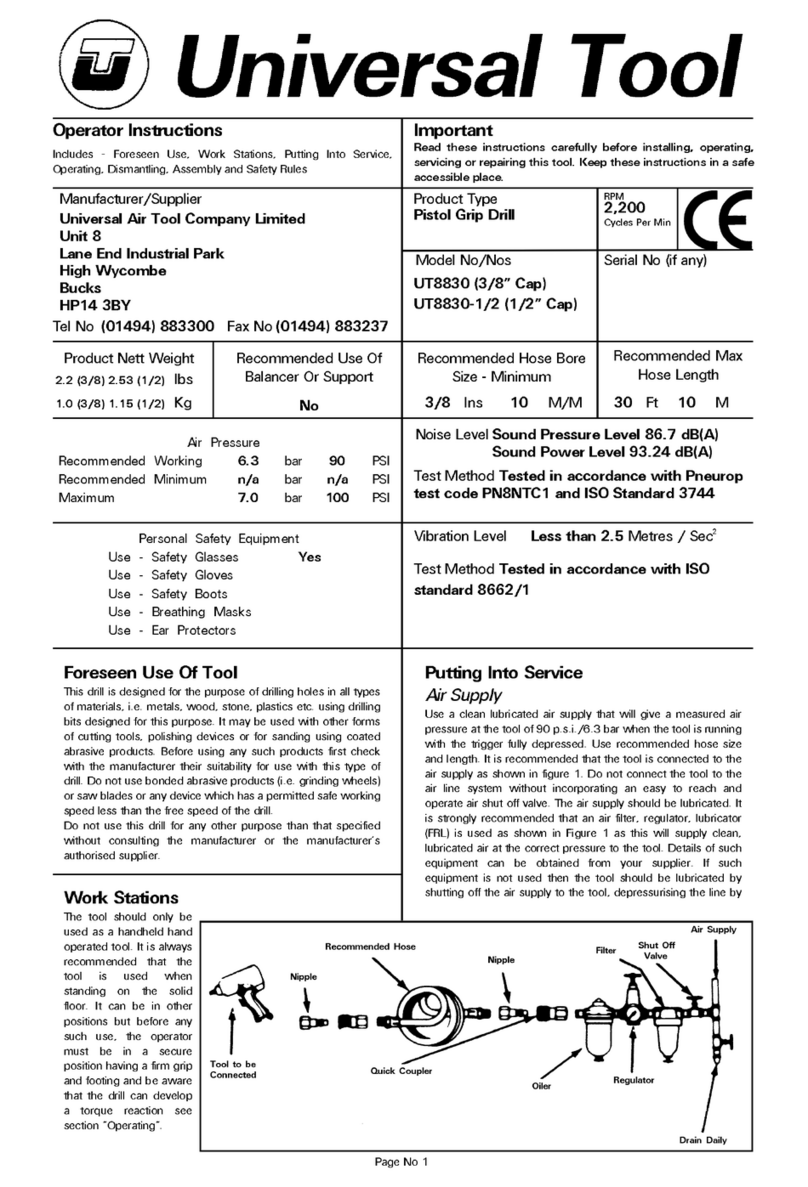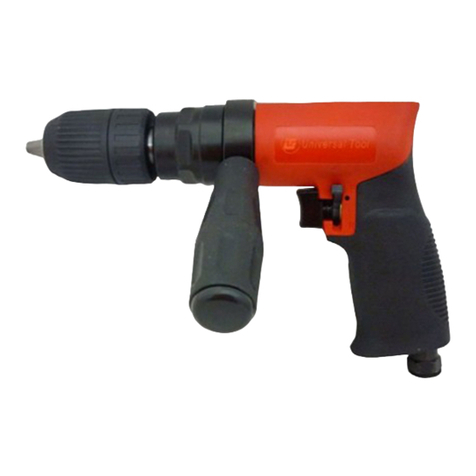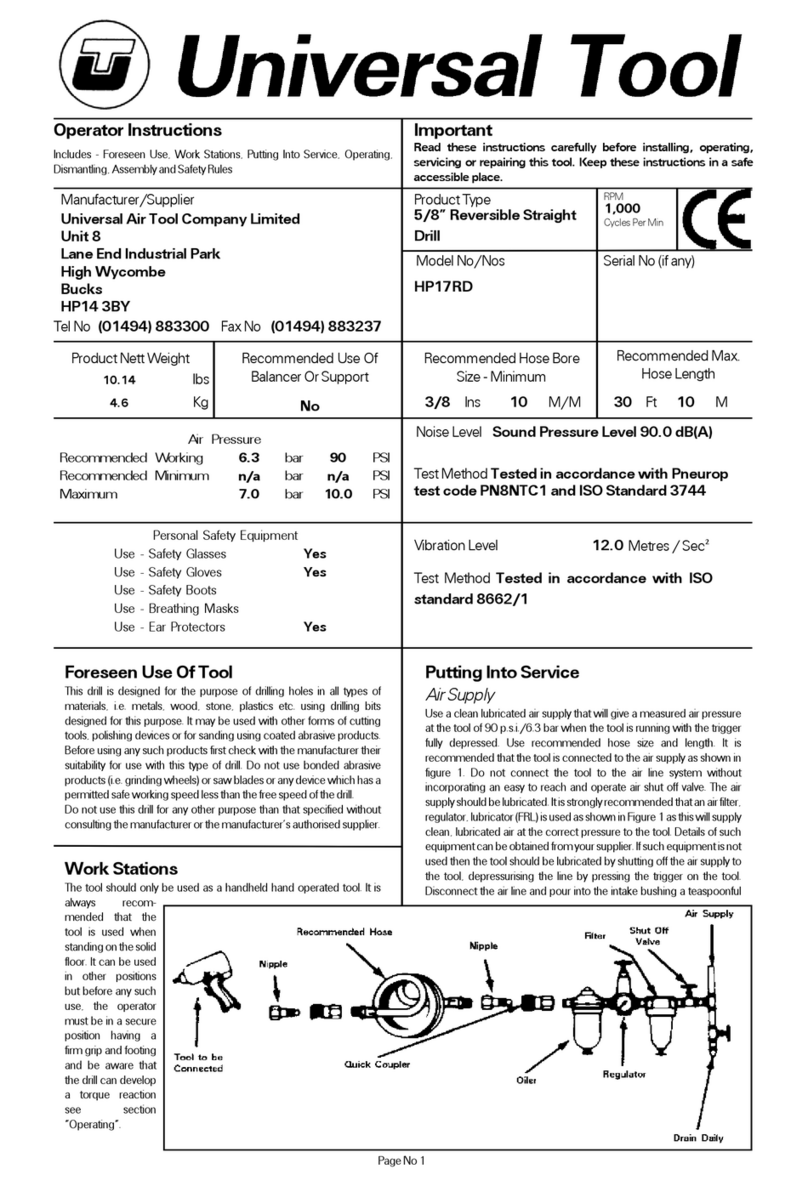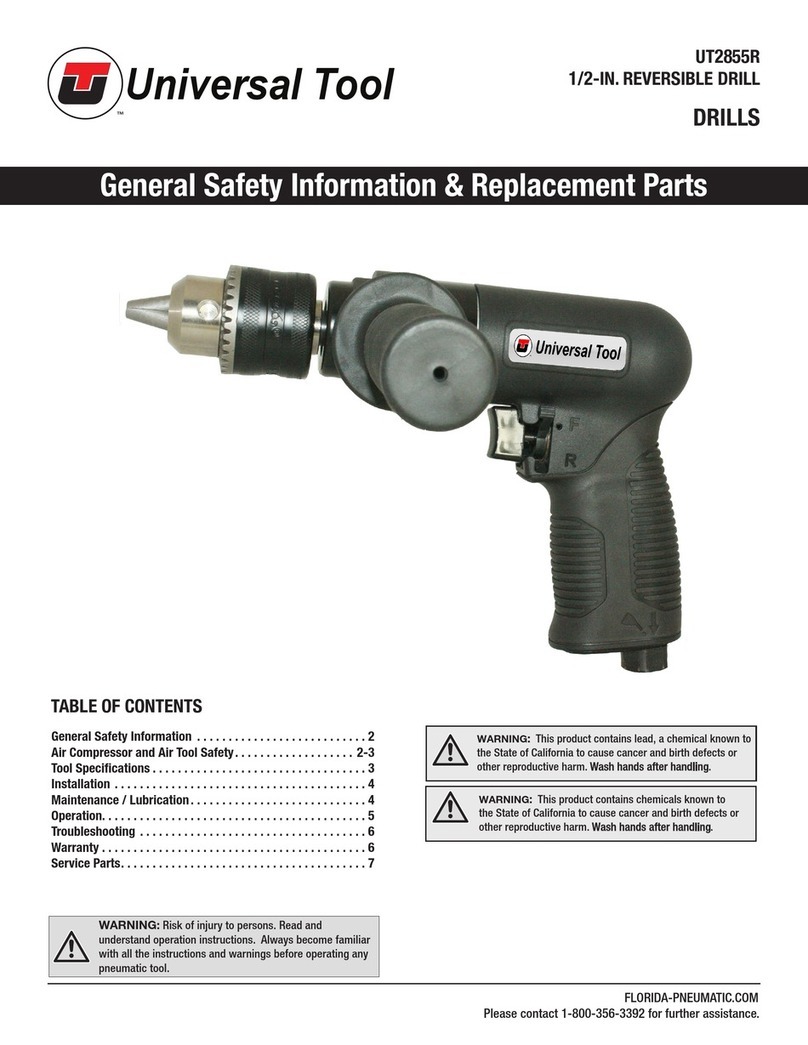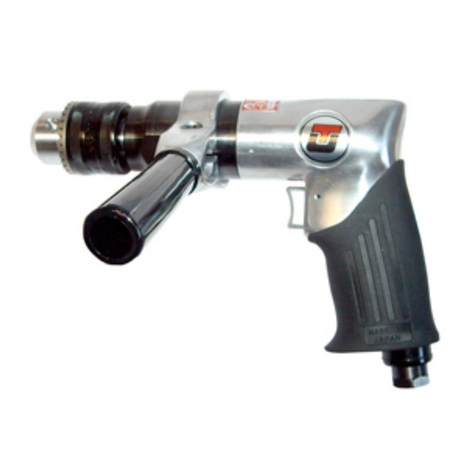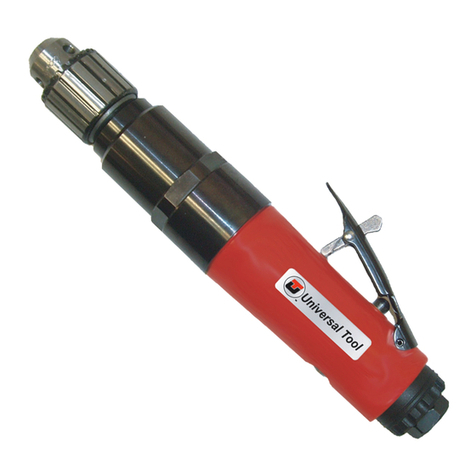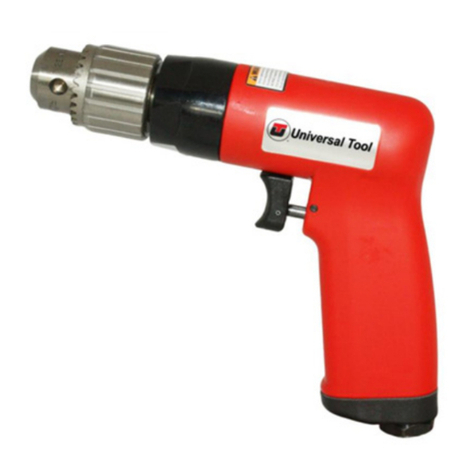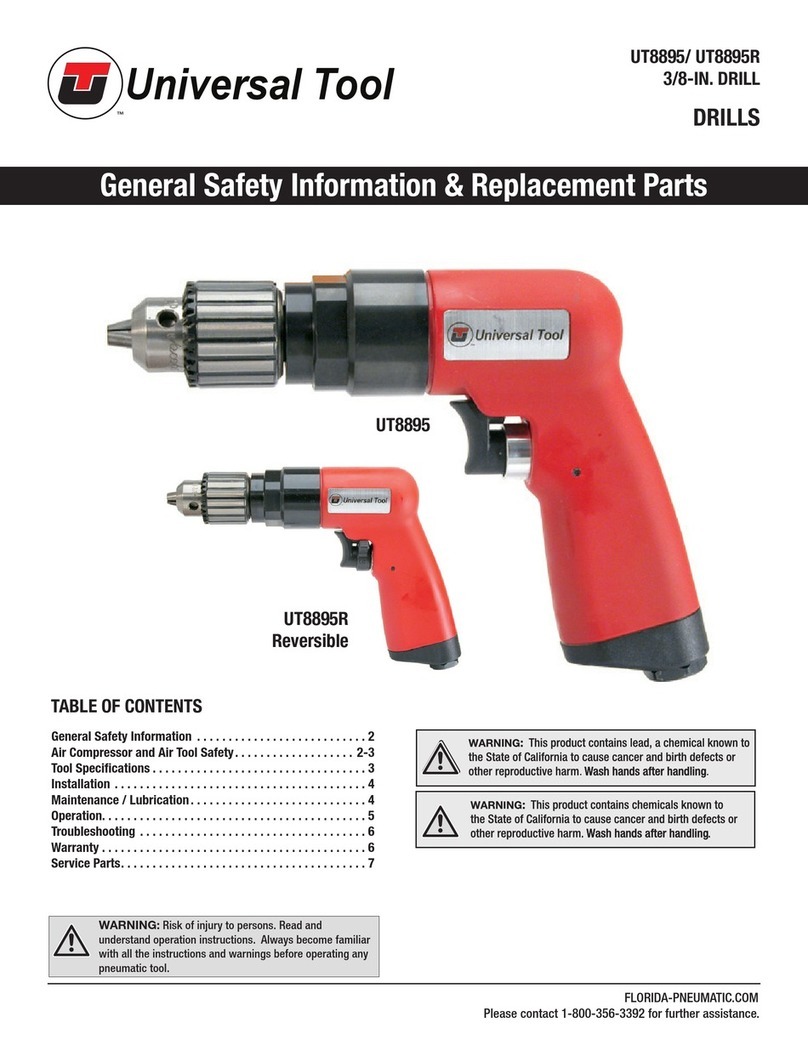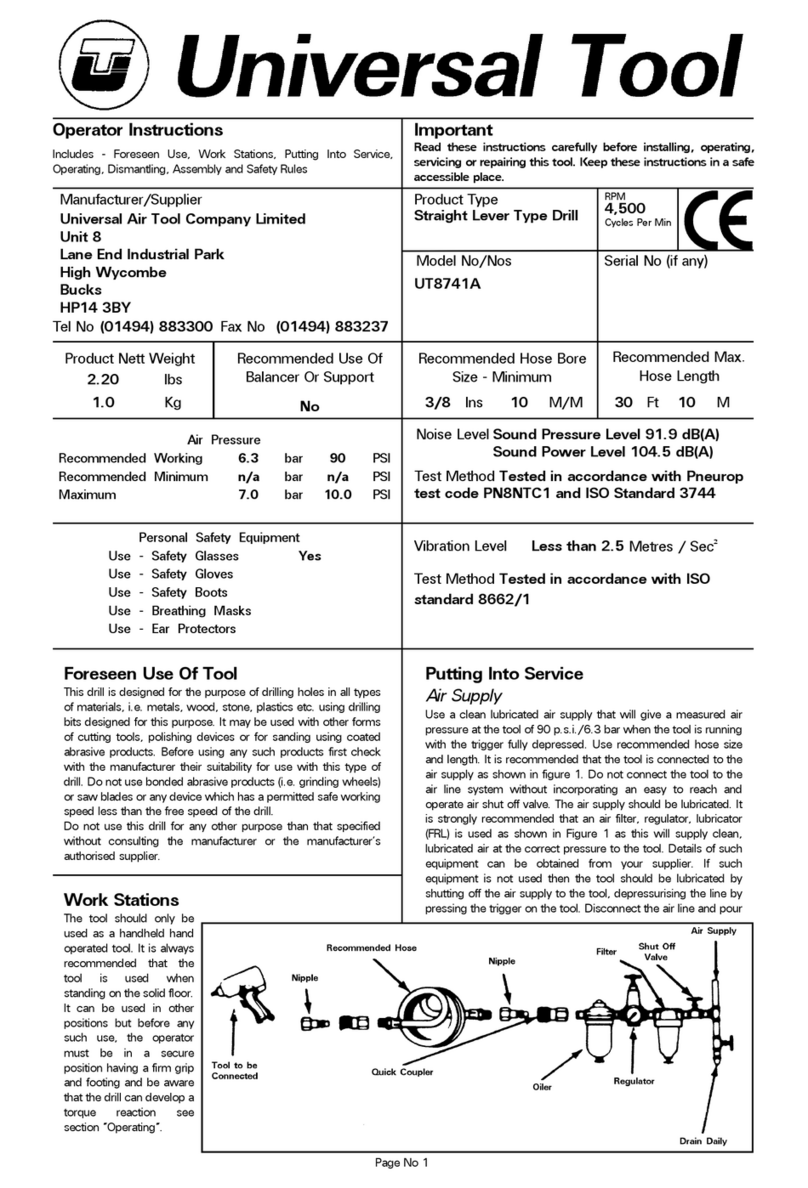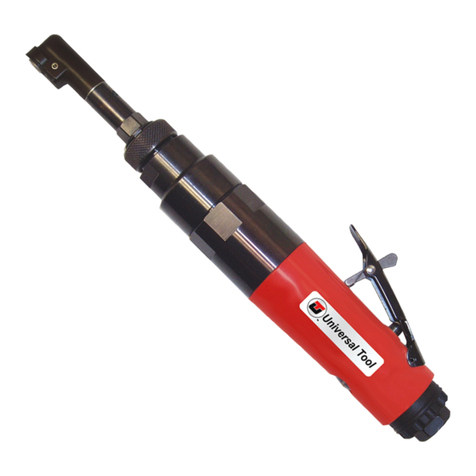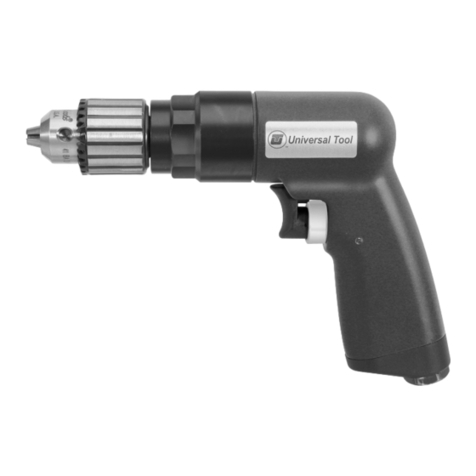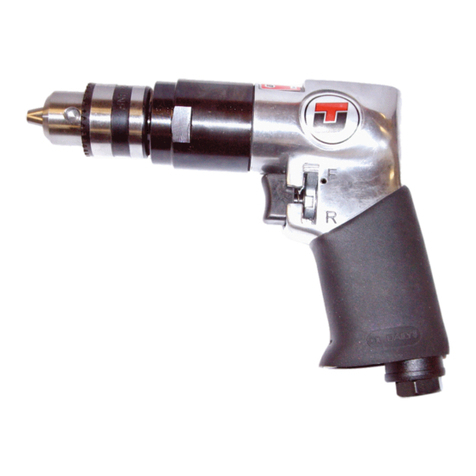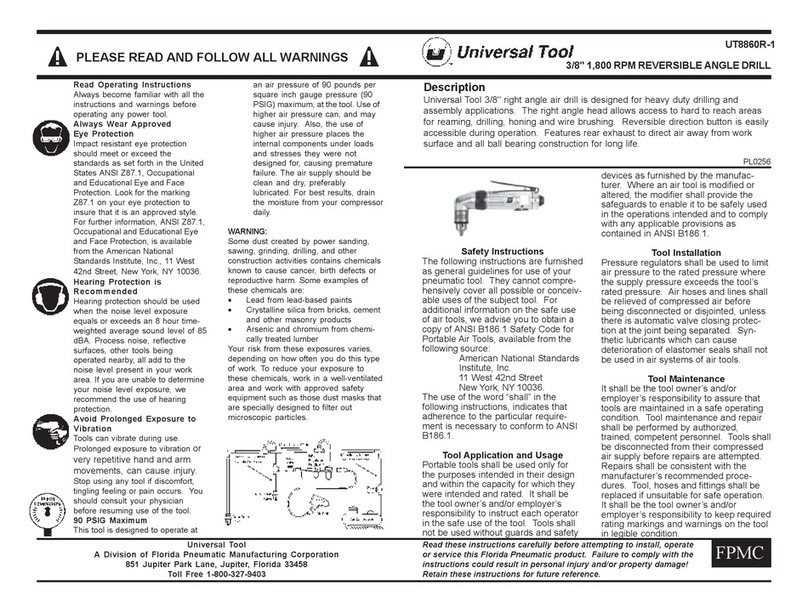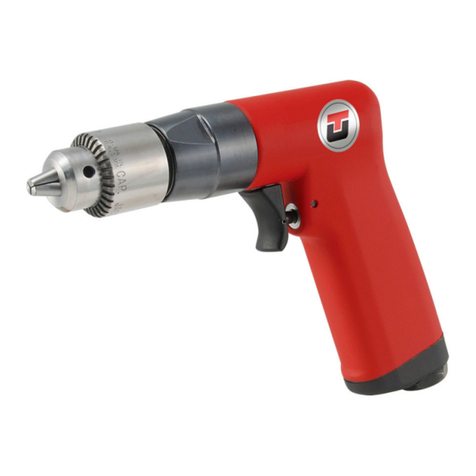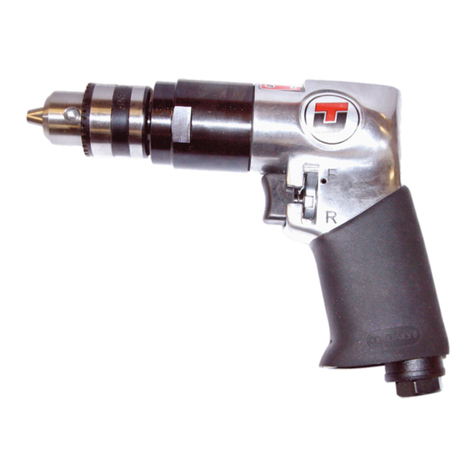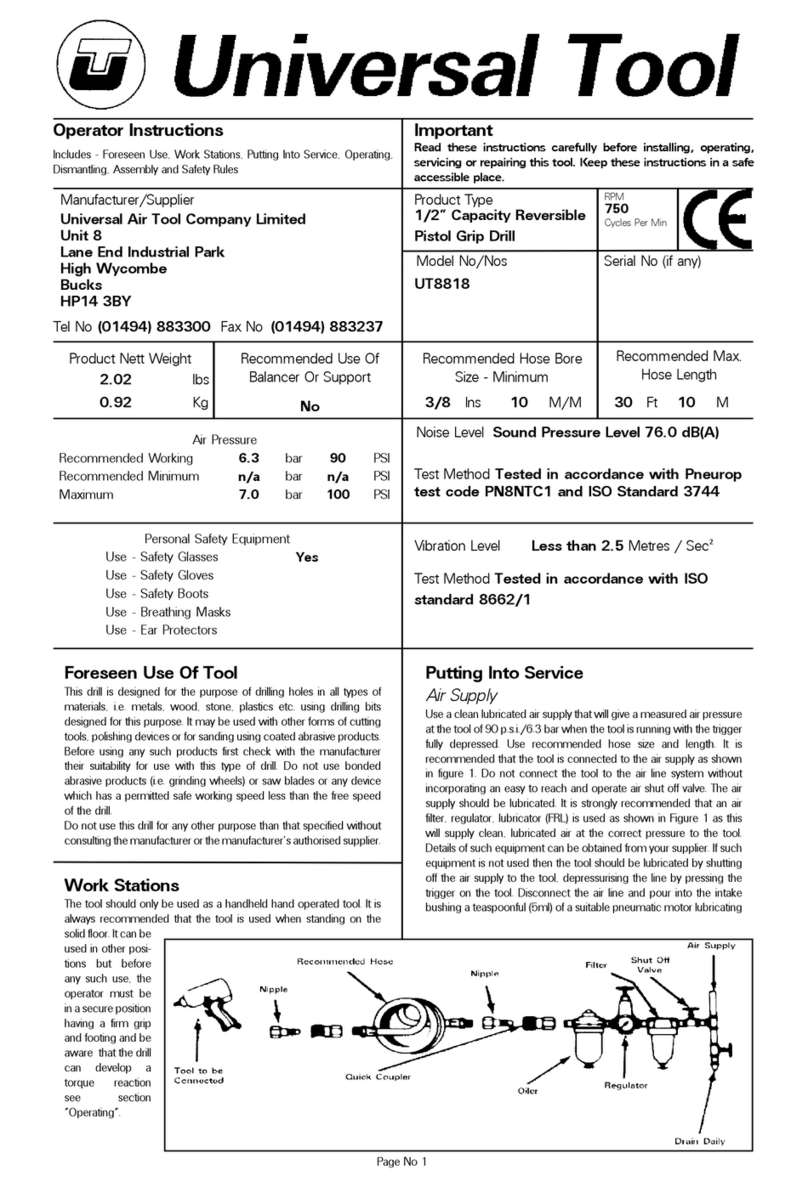
Operating
Select suitable drill bit, insert the shank into the drill chuck as far
as possible and tighten chuck with key supplied making sure that
the shank of the device is securely clamped centrally between
the three chuck jaws. Remove chuck key.
When drilling holes of all sizes it is advised to use a pointed
punch to mark the centre at which the hole is to be drilled as this
will provide a starting point for the drill tip. This procedure will
prevent the drill bit from skidding, ensure that the hole is drilled
where intended and help to prevent drill breakage when using
small drills. When drilling, particularly with small diameter drills,
always try to ensure that load applied to the drill is such that the
drill bit is always at right angles to the hole being drilled. Do not
force the drill but allow it to cut.
When drilling always adopt a firm posture to be able to
counteract any sudden movement of the drill due to torque
reaction. Such torque reaction can occur when the drill stalls due
to a too heavy load being applied or the material being too hard
or tough. The torque reaction can occur when the drill breaks
through the material being drilled, particularly on sheet metal.
Always use eye protection and hand protection is advised,
particularly when drilling holes in metals where the material being
removed from the hole is in the form of long sharp strips. Do not
tie the drill chuck key to the drill as the attaching device i.e. string
or chain could become entangled with the rotating chuck and bit
etc.
If using an abrasive device, drilling stone or performing any
operation where dust is created, it is recommended to use a
breathing mask.
Always ensure that the material to be drilled is firmly fixed to
prevent its movement.
It is also recommended that when drilling holes of large diameter
to first pre drill a hole of smaller diameter as this will reduce effort
required to drill the hole and minimise torque reaction.
preferably incorporating a rust inhibitor. Reconnect tool to air
supply and run tool slowly for a few seconds to allow air to
circulate the oil. If tool is used frequently lubricate on daily basis
and if tool starts to slow or lose power.
It is recommended that the air pressure at the tool whilst the tool
is running is 90 p.s.i./6.3 bar. The tool can run at lower and
higher pressures with the maximum permitted working air
pressure of 100 p.s.i./7.0 bar.
Page No 2
Safety Rules When Using A Drill
1) Read all the instructions before using this tool. All operators
must be fully trained in its use and aware of these safety rules. All
service and repair must be carried out by trained personnel.
2) Always select a suitable cutting, abrasive device suitable for
use with this drill.
3) Always shut off the air supply to the drill and depress the
trigger to exhaust air from the feed hose before fitting, adjusting
or removing the device. Remove drill chuck.
4) Always adopt a firm footing and/or position and be aware of
torque reaction developed by the drill.
5) Use only correct spare parts.
6) Check hose and fittings regularly for wear. Do not carry the
tool by its hose and ensure that the hand is remote from the
on/off valve (trigger) when carrying the tool with air supply
connected.
7) Do not exceed maximum recommended air pressure. Avoid
low air pressures as this will allow the drill to stall more easily and
develop torque reaction.
8) Use safety equipment as recommended.
Dismantling & Assembly Instructions
Disconnect tool from air supply.
The drill chuck (25) may be removed by placing the chuck
adjusting key securely in the chuck and giving the key a sharp tap
with a hammer in the direction to loosen a right hand threaded
joint. Remove chuck spacer (27). If this fails to remove the chuck
remove it after the gearbox assembly has been removed from
the drill handle. (See later). Place motor housing (1) in a vice fitted
with soft jaws with the handle section pointing upwards, and
remove screw (4) and exhaust deflector (3) and locking adaptor
(24). Unscrew to remove gearbox and pull out motor assembly.
If the drill chuck has not been removed as it is too tightly fitted, it
can be removed as follows. Pull off ring gear (20) from gearbox
and pull off 3 off idler gears (21). Use a suitable square section
bar inserted between the pins in idler gear plate (22), pushed up
against the face to ensure that contact is made at the bottom of
the pins and unscrew the chuck using the chuck key. Do not use
a round bar or locate at the outer edge of the pins as this may
distort the 3 pins. A length of 8mm (0.312) square bar is ideal for
this purpose. Continue to dismantle the gearbox by supporting
ball bearings (23) on the gear side in a piece of tube of suitable
bore to just clear the largest diameter of idler gear plate (22) and
press out idler gear plate from bearings 2 off- (23). It is
recommended that the pins in the idler plate (22) are not
removed for replacement and the complete idler gear plate (22)
is replaced. For information the nominal diameter of the three
pins in the idler plate (22) is 0.1574 ins. Replacement is required
if the pins are badly damaged or worn below 0.155 diameter.
To dismantle motor assembly grip the front end plate (18) tightly
by hand and tap the gear end of the rotor with a non metallic or
soft metal (lead or aluminium) hammer through the front end
plate (18) and bearing (19). Remove 4 off rotor blades (16) and
cylinder (17). Support rear end plate (13) in a piece of tube with
a bore size as close as possible to the largest diameter of the
rotor (15) and tap the non splined end of the rotor to remove it
from the rear end plate and bearing. Tap out bearing (19) from
front end plate (18).
Tap out trigger retaining pin (2) and pull out trigger assembly.
Remove trigger (10) from valve stem (6). Remove valve stem (6)
from valve bushing (9) and remove O-ring (5). Remove 2 off
O-rings (7) and O-ring (8) from valve bushing (9).
Reassembly
Clean all component parts and examine for wear before
reassembling. Use only manufacturers or distributor supplied
spare parts. Check in particular for wear and cuts on O-rings and
wear on rotor blades. Lightly coat all parts with a suitable
pneumatic tool lubricating oil. Pack all bearings and gearbox with
a general purpose lithium or molybdenum based general
purpose grease.
Assemble in reverse order - see notes below.
Motor Assembly
If fitting a new rotor very lightly deburr the edges of the rotor
slots. Make sure rotor blade slots are clean. Make sure that the
faces of the front and rear end plates (18) and (13) that abut
cylinder (17) are free from burrs and surface marking. If
necessary lap faces on a flat, very fine grade of abrasive paper.
Press bearing (19) into end plate (18). Support bearing (12) at
rear end on the inner race and tap rotor on the gear end with a
soft metal or non metallic hammer until the rotor locates against
the face of the rear end plate. Support the inner face of the rear
end plate in a piece of tube with a bore diameter as close as
possible to the largest diameter of the rotor and tap the non
splined end until a clearance of .040 to .065mm is obtained
between the inner face of the rear end plate and the rotor. This
clearance to be checked when pulling the rotor by hand away
from the rear end plate and bearing assembly.
Spin rotor to ensure that it will spin freely in the rear end plate and
bearing assembly. Fit rotor blades and cylinder ensuring that the
pin in one end of the rotor cylinder locates in the round hole in the
rear end plate. Push on front end plate and check that rotor still
rotates freely.
Reassemble tool in reverse order.

